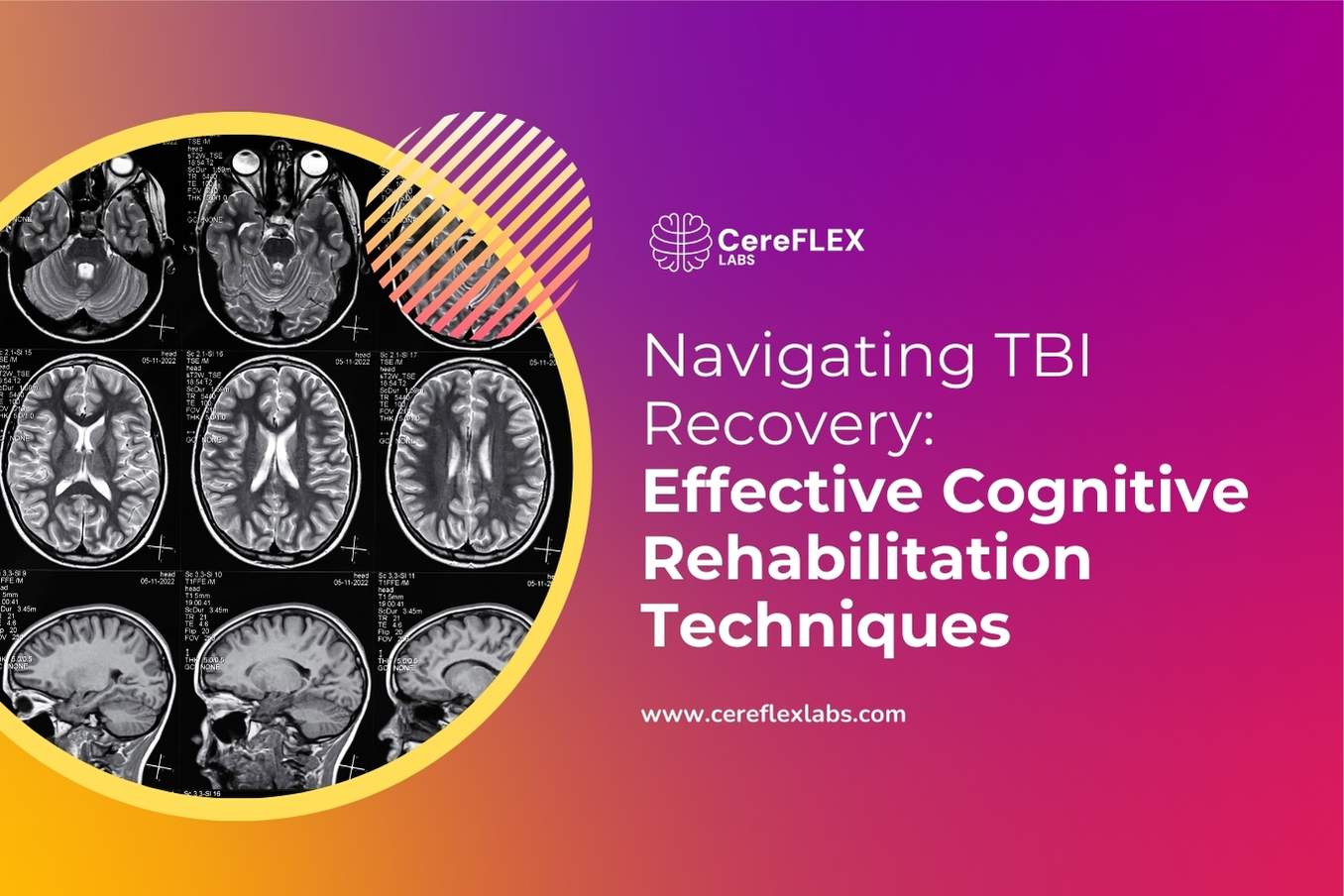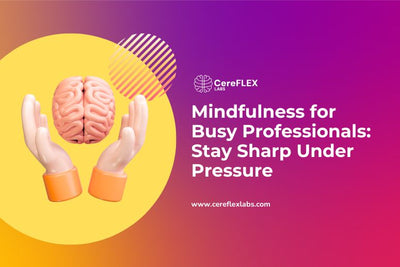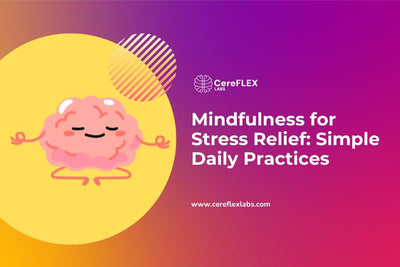Traumatic Brain Injury (TBI) can profoundly impact lives, disrupting both physical abilities and cognitive functions like memory, attention, and decision-making. These injuries often result from events such as sports accidents, car crashes, or falls, creating significant challenges in daily life.
Fortunately, cognitive rehabilitation provides a path toward recovery, offering techniques and tools designed to help individuals regain mental function and independence.
This guide explores the best practices and tools for cognitive rehabilitation after TBI, highlighting evidence-based methods and innovative therapies that support cognitive recovery. With the right strategies, TBI survivors can rebuild their mental abilities, reclaim independence, and improve their overall quality of life.
Here is the Quick Answer |
|
Cognitive rehabilitation helps TBI survivors regain memory, attention, and decision-making skills through personalized therapy and cutting-edge tools like VR and telerehabilitation. Key strategies include tailored exercises, assistive tech, and caregiver support, all aimed at restoring independence and improving quality of life. |
Common Cognitive Issues After TBI
Traumatic Brain Injury (TBI) often leads to cognitive challenges that disrupt daily life. These issues commonly include difficulties with attention, memory, and executive functioning. While the severity of these problems depends on the extent of the injury, even mild cases can significantly impact a person’s quality of life.
Attention and Memory
TBI frequently impairs attention and memory, making it hard to focus, retain new information, and recall past events. Everyday activities like reading, driving, or managing routines can become overwhelming due to these challenges.
Executive Functioning
TBI can also affect executive functions such as planning, decision-making, problem-solving, and self-control. Difficulties in attention and memory compound these issues, making it harder to process complex information. As a result, individuals may struggle to complete tasks, interact effectively with others, and make sound decisions.
These cognitive problems can be further exacerbated by accompanying physical, neurological, or mental health conditions. Therefore, conducting a comprehensive neuropsychiatric assessment before beginning any treatment is essential. This step ensures a personalized and effective rehabilitation plan tailored to the individual’s unique needs.

What is cognitive rehabilitation?
Cognitive rehabilitation is a structured therapeutic approach designed to improve cognitive functions impaired by brain injuries or neurological conditions. Its primary goal is to enhance skills such as memory, attention, perception, learning, planning, sequencing, and judgment.
Cognitive rehabilitation therapy (CRT) helps individuals process and understand information more effectively, enabling them to improve their daily lives, including relationships, work, and community involvement.
By working with a clinician, patients engage in exercises, hands-on activities, and discussions that teach them strategies to regain and strengthen their thinking skills. This therapy benefits those recovering from brain injuries, strokes, or other medical conditions affecting cognitive abilities.
Importance in TBI Recovery
Cognitive rehabilitation plays a crucial role in helping people recover from traumatic brain injury (TBI). The therapy addresses cognitive issues that can disrupt daily life and offers multiple benefits:
-
Restoring brain function: Targeted therapies enhance skills like attention, memory, and decision-making.
-
Regaining independence: Improved cognitive abilities empower individuals to manage daily tasks and regain control over their lives.
-
Improving quality of life: Cognitive rehabilitation reduces the emotional and social impacts of cognitive issues, enhancing mental well-being and overall happiness.
By providing tailored strategies and support, cognitive rehabilitation helps TBI survivors overcome challenges, regain independence, and rebuild their quality of life.
Best Practices in Cognitive Rehabilitation
Effective cognitive rehabilitation hinges on tailored approaches, collaboration among professionals, and clear goal-setting. These practices ensure therapies meet the unique needs of each TBI patient, enabling meaningful progress and recovery.
Individualized Therapy Plans
Cognitive rehabilitation is most effective when tailored to each patient’s specific challenges. TBI patients often experience diverse issues, such as memory loss, attention deficits, or planning difficulties. A personalized therapy plan addresses these unique needs to maximize recovery. For example:
- Patients with memory challenges benefit from memory training and recall exercises.
- Those with attention deficits can practice concentration drills or mindfulness techniques.
Interdisciplinary Team Approach
Successful cognitive rehabilitation requires a team of professionals working together to address all aspects of cognitive health. Key team members include:
-
Neuropsychologists: Evaluate cognitive abilities and develop therapy plans.
-
Occupational Therapists: Help patients relearn everyday skills and adapt to challenges.
-
Speech-Language Pathologists: Focus on improving communication and language abilities.
This collaborative approach ensures a comprehensive recovery process by addressing cognitive, functional, and communication needs.
Goal-Setting and Outcome Measurement
Clear, measurable goals are crucial to guiding the rehabilitation process and tracking progress. Examples include:
-
Short-term goals: Remembering a short list of words within a set timeframe.
-
Long-term goals: Sustaining focus on tasks for extended periods without distraction.
Regular progress reviews allow therapists to adjust plans based on the patient’s evolving needs, ensuring therapy remains effective and aligned with recovery goals.
By combining personalized therapy, collaborative teamwork, and structured goal-setting, cognitive rehabilitation offers a clear path to meaningful recovery for TBI patients.
What are the best cognitive rehabilitation techniques for TBI?
Cognitive rehabilitation employs various methods to restore or adapt cognitive functions affected by brain injury or illness. These strategies are tailored to address specific challenges, either by rebuilding lost skills or developing coping mechanisms.

1. Neurofeedback (EEG Biofeedback)
Neurofeedback allows patients to monitor and adjust their brain activity by displaying brain wave patterns on a screen. By practicing tasks, patients learn to recognize and control these patterns, enhancing focus, relaxation, and emotional balance.
This technique boosts cognitive performance through improved self-awareness and mental control.
2. Attention Processing Training (APT)
APT focuses on improving attention and reducing distractions. Patients engage in exercises like identifying specific items while ignoring irrelevant stimuli. These tasks gradually increase in complexity to strengthen focus and attention skills.
3. Virtual Reality (VR) Rehabilitation
Virtual reality provides immersive environments for cognitive training. Patients can simulate real-life scenarios, such as shopping in a virtual store or completing daily tasks, with immediate feedback.
VR enhances memory, problem-solving, and spatial awareness by engaging multiple senses in ways traditional methods cannot.
4. External Assistive Devices
Tools such as alarms, calendars, and note-taking devices help manage memory and organizational challenges. These aids support daily routines, improve recall, and foster independence by reducing reliance on memory alone.
5. Speech-Language Therapy Exercises
Speech-language therapy helps patients with communication difficulties improve verbal and non-verbal skills. Techniques include word retrieval, sentence construction, and pronunciation exercises, which enhance the ability to express and comprehend language effectively.
6. Occupational Therapy
Occupational therapy focuses on teaching patients practical strategies for managing daily tasks. Therapists work on improving cognitive functions like attention and memory while helping patients develop coping methods to navigate everyday challenges more effectively.
7. Computer-Assisted Training Programs
Interactive programs like BrainHQ and CogniFit offer personalized cognitive exercises targeting memory and attention. These programs adapt to users' performance levels, ensuring a tailored rehabilitation experience while engaging patients in dynamic training.
8. Smartphone and GPS Use
Smartphones and GPS devices are invaluable for cognitive rehabilitation. Apps can assist with reminders, task organization, and navigation, promoting consistency and independence.
Popular tools like Lumosity and CogniFit provide engaging games to enhance memory, focus, and processing speed, making rehabilitation both accessible and enjoyable..
Cognitive Rehabilitation Exercises to Sharpen Your Mind
These exercises are designed to improve multitasking, attention, memory, and problem-solving skills. They can be adjusted in difficulty to match your needs and may require assistance from a caregiver or family member.
Attention and Multitasking Exercises
-
Auditory Attention: A caregiver reads a word list, and the patient marks words starting with a specific letter. Adjust difficulty by changing the speed or complexity of the words.
-
Rhythm Matching: The caregiver taps a rhythm, and the patient copies it. Increase difficulty by using more complex rhythms or sounds.
- Computational Memory: Start with a two-digit number, add 3 repeatedly, then subtract 7. This improves focus, memory, and mental processing.
Fine Motor Exercises
-
Stacking and Stretching: Stack pennies, stretch rubber bands, or complete jigsaw puzzles to enhance coordination and cognitive engagement.
-
Use Your Non-Dominant Hand: Perform tasks like brushing hair or writing with your non-dominant hand to stimulate different parts of the brain.
-
Sensory Attention: Sit outside and describe what you see, hear, or smell to improve sensory attention and observation skills.
Memory Skills Exercises
-
Picture Recall: Look at a few playing cards for five seconds, then identify them from the deck. Gradually increase the number of cards.
-
Naming Therapy: List items in a category (e.g., animals or tools). Caregivers can provide hints to aid memory recall.
-
Grocery Shopping: Memorize 2–3 items from a shopping list and recall them at the store without looking. Gradually add more items.
- Card Recall: Arrange playing cards in order, study them briefly, and then recall and reorder them. Increase the number of cards as skills improve.
Problem Solving and Strategy Exercises
-
Making Change: Use coins to calculate specific amounts like 35 or 54 cents to practice math and decision-making.
-
Color Sudoku: Solve a simplified version of Sudoku using colors to improve pattern recognition and logical thinking.
-
Tower of Hanoi: Move disks between rods without placing a larger disk on a smaller one to build logic and strategy.
-
Puzzles and Games: Play games like chess, Sudoku, or crosswords to enhance problem-solving, pattern recognition, and word recall.
Cognitive Therapy Apps
Apps like CT Cognitive Therapy, Lumosity, and CogniFit provide a range of exercises to train memory, critical thinking, and speech skills. These apps are adjustable for different skill levels, making cognitive rehabilitation accessible and engaging.
They also include features like progress tracking and reminders to encourage consistency in rehabilitation efforts.

The Role of Technology in Cognitive Rehabilitation
Technology plays a transformative role in enhancing cognitive rehabilitation for Traumatic Brain Injury (TBI) patients. Innovative tools like telerehabilitation platforms provide better access, increased engagement, and measurable results for both patients and caregivers, addressing long-term effects of TBI more effectively.
Telerehabilitation for TBI Patients
Telerehabilitation uses remote technology to deliver cognitive rehabilitation, making it especially beneficial for patients transitioning from the hospital to home.
A recent study demonstrated the effectiveness of tools like the tele-cockpit station and VRRS-Tablet. TBI patients participated in six training sessions per week, each lasting about one hour, in a controlled setting such as their hospital room or a family space. Results highlighted:
-
High usability scores: Patients scored 68, and caregivers scored 69 on the System Usability Scale.
-
Strong motivation: Patients scored 202.6 and caregivers 216 on the Intrinsic Motivation Inventory.
These findings show that telerehabilitation not only prepares patients for at-home cognitive therapy but also improves adherence and outcomes by providing accessible and engaging rehabilitation options.
Benefits of Digital Rehabilitation
Digital tools like virtual reality (VR) and tele-cockpit stations offer numerous advantages for cognitive recovery:
-
Accessibility and Flexibility: Remote access enables patients in rural or underserved areas to join therapy sessions without travel barriers.
-
Real-Time Feedback: Advanced systems provide immediate feedback, allowing patients and caregivers to adjust exercises for optimal results.
-
Motivation and Engagement: Interactive tools like VR create immersive and engaging environments, encouraging active participation in therapy.
- Caregiver Involvement: Including caregivers in digital therapy sessions strengthens at-home support, ensuring better usability and outcomes.
The Important Role of Family and Caregivers
Family members and caregivers play a vital role in cognitive rehabilitation, providing both emotional and practical support. Their involvement not only motivates patients but also helps them stay consistent with their exercises and therapies.
A supportive environment fosters a sense of safety and belonging, which is critical for recovery.
How Caregivers Can Help with Cognitive Exercises
Caregivers are essential partners in the rehabilitation process and can assist by:
-
Helping with exercises: Guiding patients through cognitive exercises at home to reinforce therapy goals.
-
Tracking progress: Monitoring improvements and challenges to provide valuable feedback to therapists.
-
Encouraging adherence: Motivating patients to follow therapy plans and stay committed to their recovery journey.
These efforts can significantly boost the patient’s confidence and enhance their commitment to rehabilitation.
Training for Caregivers
To be effective, caregivers need proper training to support their loved ones. Programs, support groups, and resources are available to teach caregivers about:
-
Cognitive rehabilitation techniques: Understanding the tools and strategies needed to assist with therapy.
-
Using technology: Learning to integrate telerehabilitation tools and apps into daily routines for more accessible and effective care.
Well-trained caregivers become informed advocates in the recovery process, increasing the overall effectiveness of cognitive rehabilitation.
By combining caregiver involvement, training, and technology, cognitive rehabilitation becomes a comprehensive process. This holistic approach helps patients improve their cognitive abilities, regain independence, and enhance their quality of life.
Conclusion
Cognitive rehabilitation is a powerful tool for helping individuals with traumatic brain injury (TBI) regain essential brain functions and improve their quality of life.
By incorporating exercises like memory recall, problem-solving, and attention training alongside advanced tools such as telerehabilitation and virtual reality, recovery becomes both more effective and accessible. These approaches not only promote brain healing but also foster independence and confidence in daily activities.






